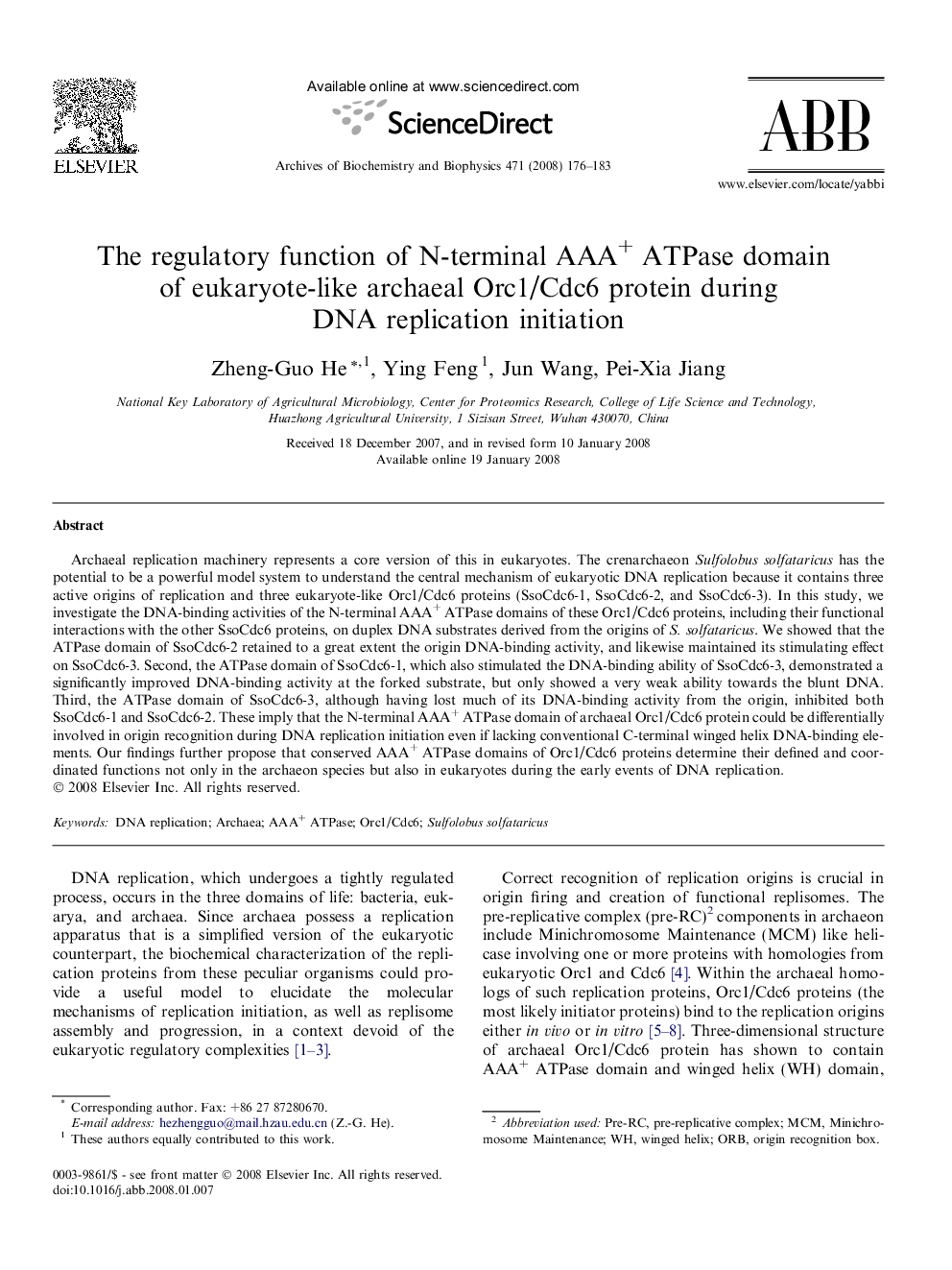| Article ID | Journal | Published Year | Pages | File Type |
|---|---|---|---|---|
| 1926737 | Archives of Biochemistry and Biophysics | 2008 | 8 Pages |
Archaeal replication machinery represents a core version of this in eukaryotes. The crenarchaeon Sulfolobus solfataricus has the potential to be a powerful model system to understand the central mechanism of eukaryotic DNA replication because it contains three active origins of replication and three eukaryote-like Orc1/Cdc6 proteins (SsoCdc6-1, SsoCdc6-2, and SsoCdc6-3). In this study, we investigate the DNA-binding activities of the N-terminal AAA+ ATPase domains of these Orc1/Cdc6 proteins, including their functional interactions with the other SsoCdc6 proteins, on duplex DNA substrates derived from the origins of S. solfataricus. We showed that the ATPase domain of SsoCdc6-2 retained to a great extent the origin DNA-binding activity, and likewise maintained its stimulating effect on SsoCdc6-3. Second, the ATPase domain of SsoCdc6-1, which also stimulated the DNA-binding ability of SsoCdc6-3, demonstrated a significantly improved DNA-binding activity at the forked substrate, but only showed a very weak ability towards the blunt DNA. Third, the ATPase domain of SsoCdc6-3, although having lost much of its DNA-binding activity from the origin, inhibited both SsoCdc6-1 and SsoCdc6-2. These imply that the N-terminal AAA+ ATPase domain of archaeal Orc1/Cdc6 protein could be differentially involved in origin recognition during DNA replication initiation even if lacking conventional C-terminal winged helix DNA-binding elements. Our findings further propose that conserved AAA+ ATPase domains of Orc1/Cdc6 proteins determine their defined and coordinated functions not only in the archaeon species but also in eukaryotes during the early events of DNA replication.
